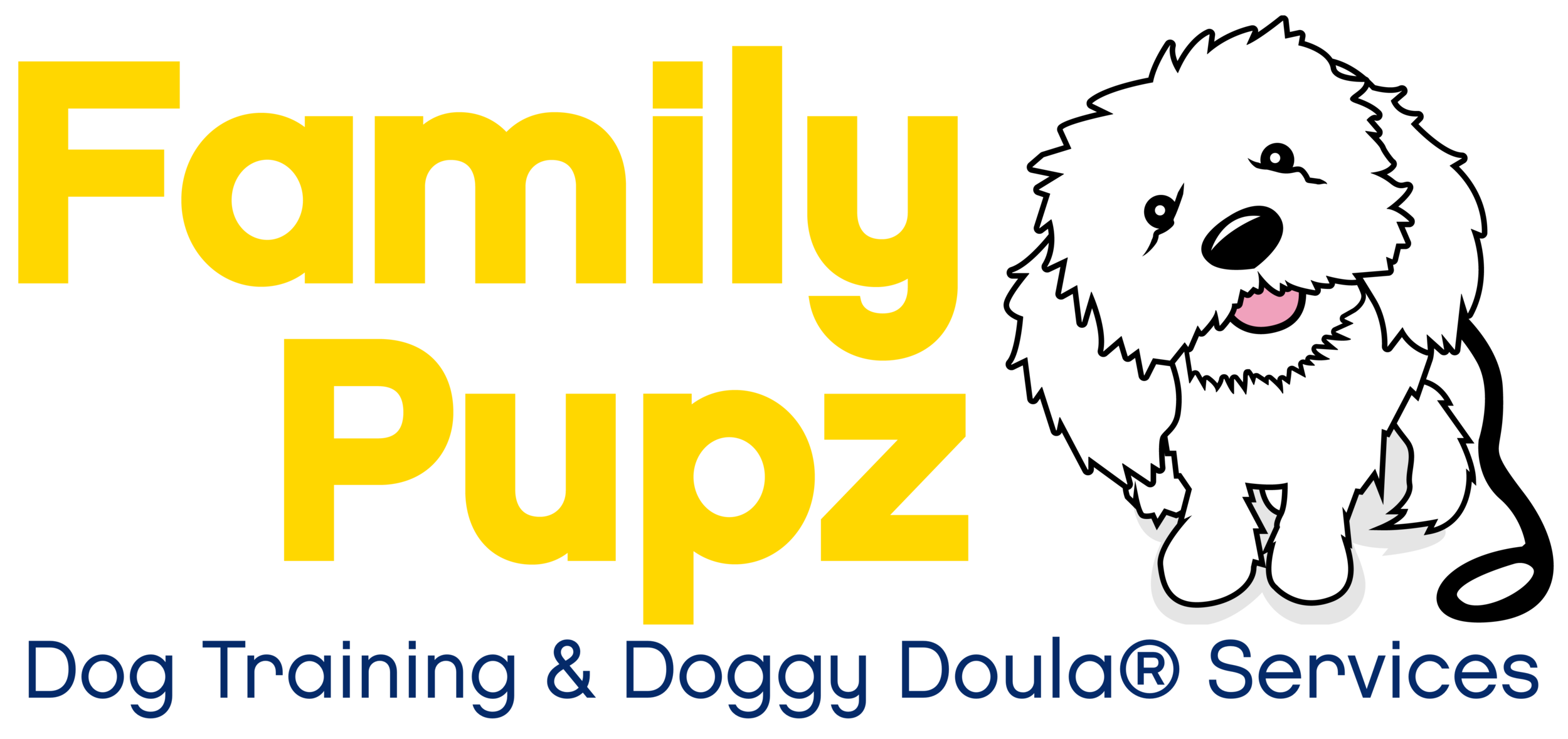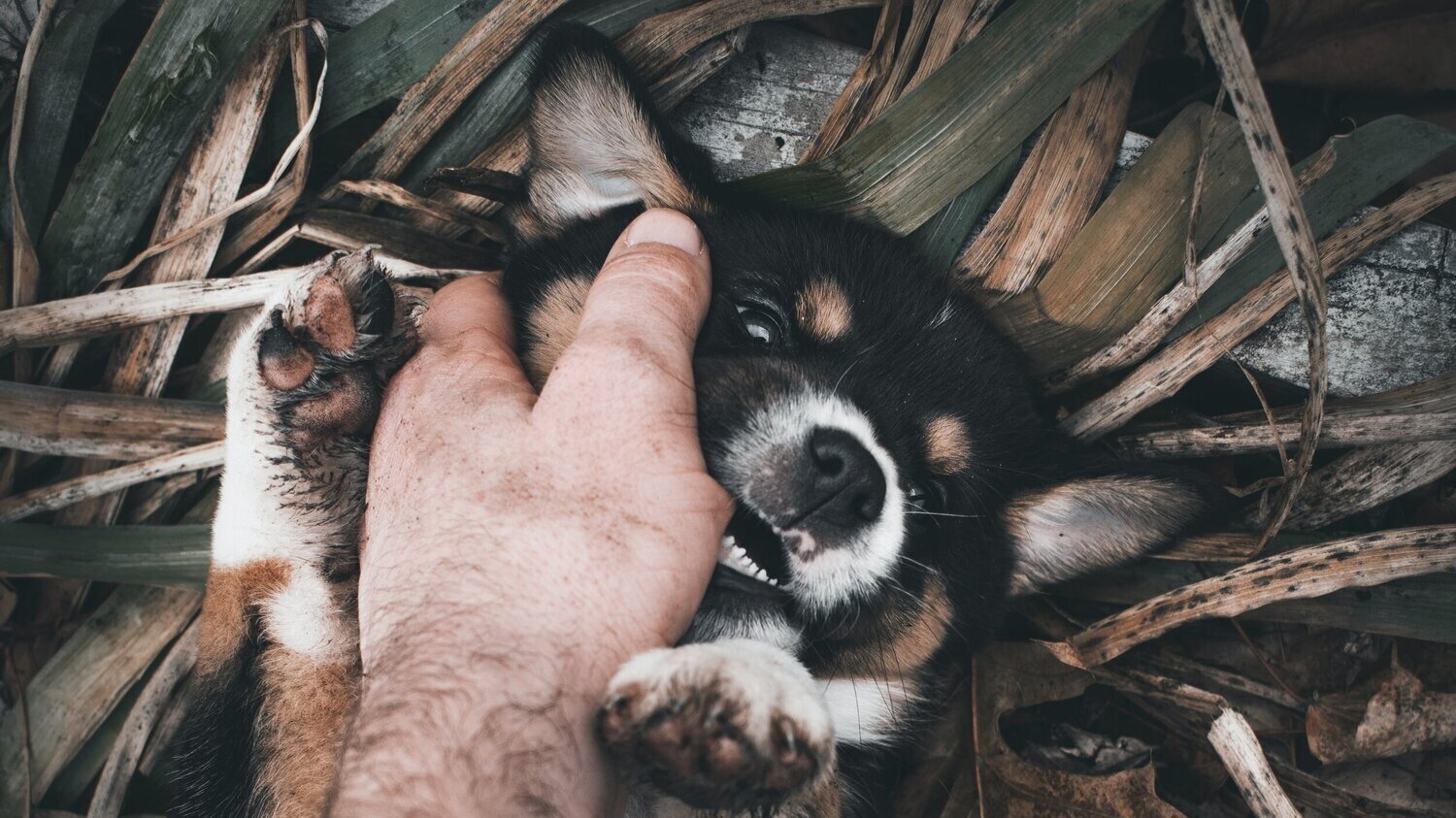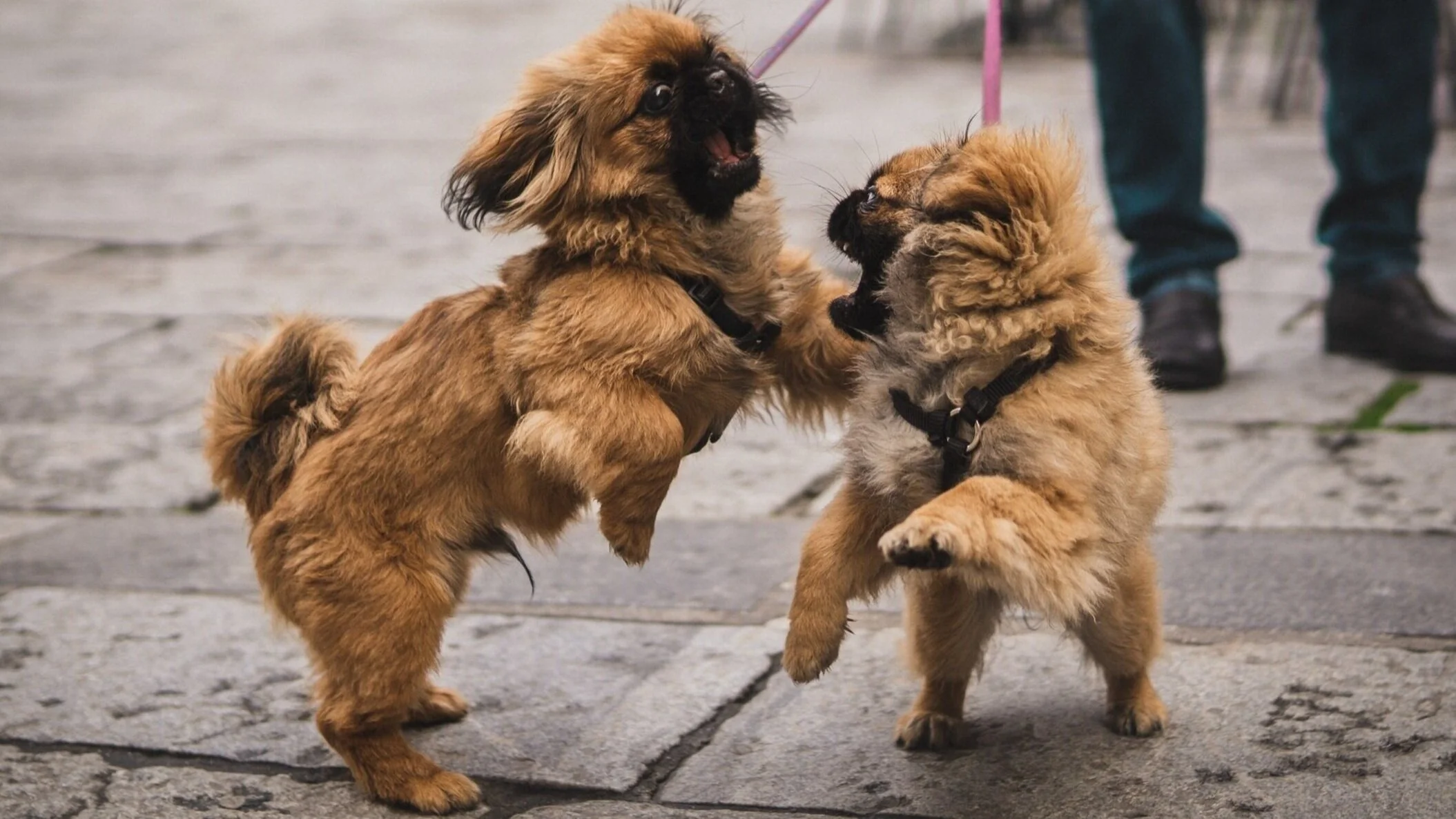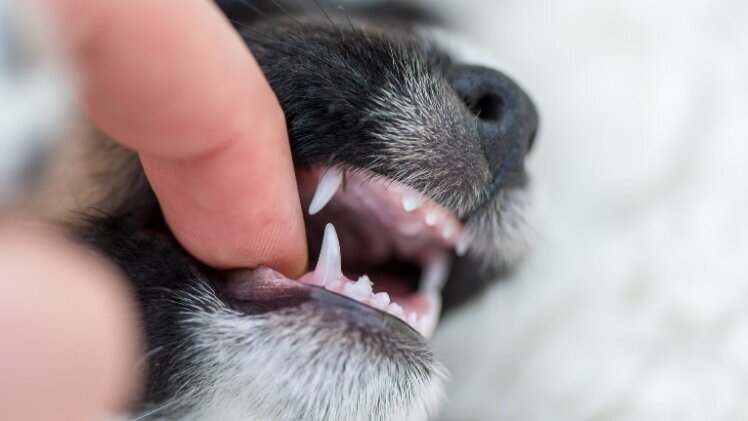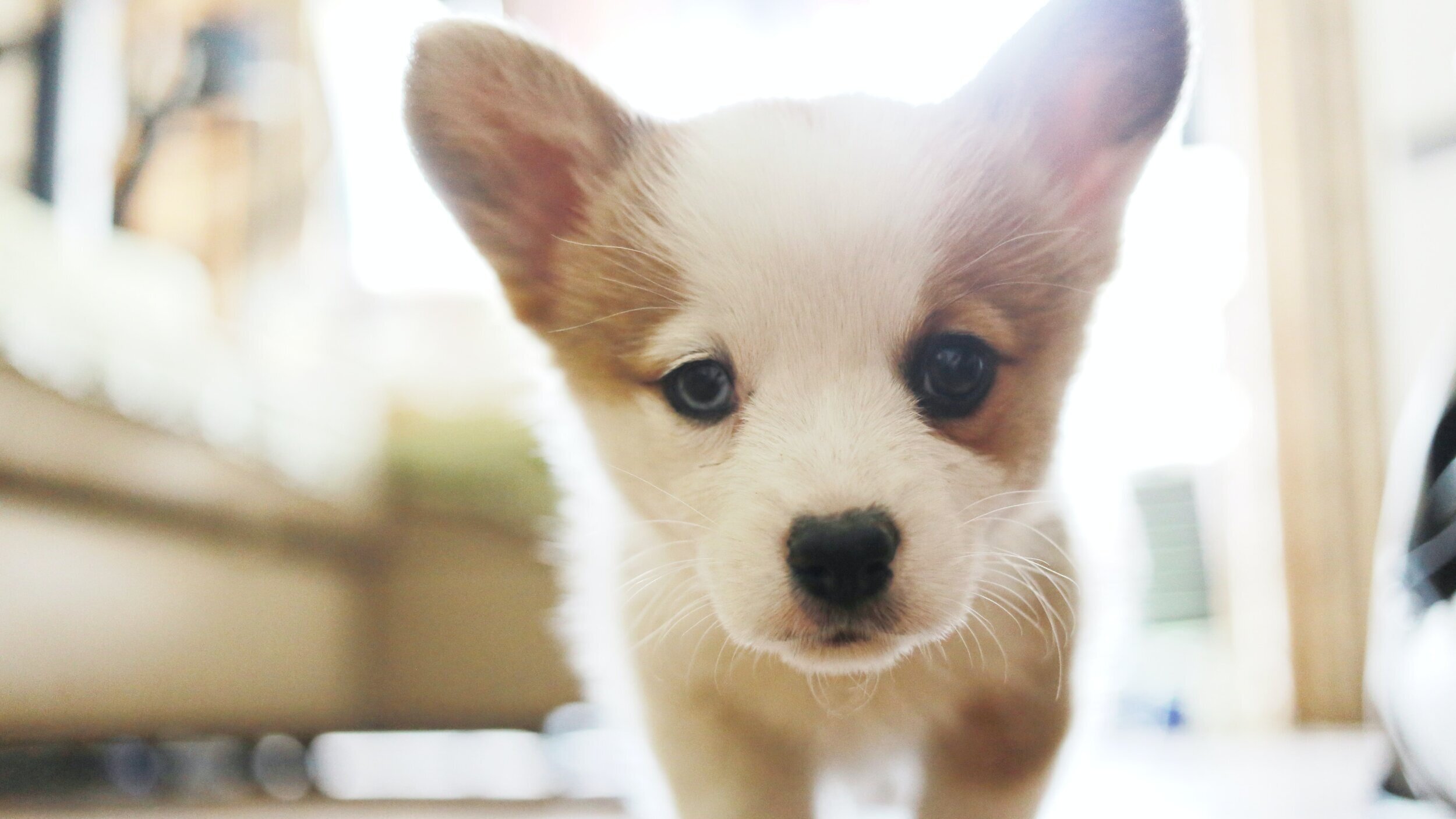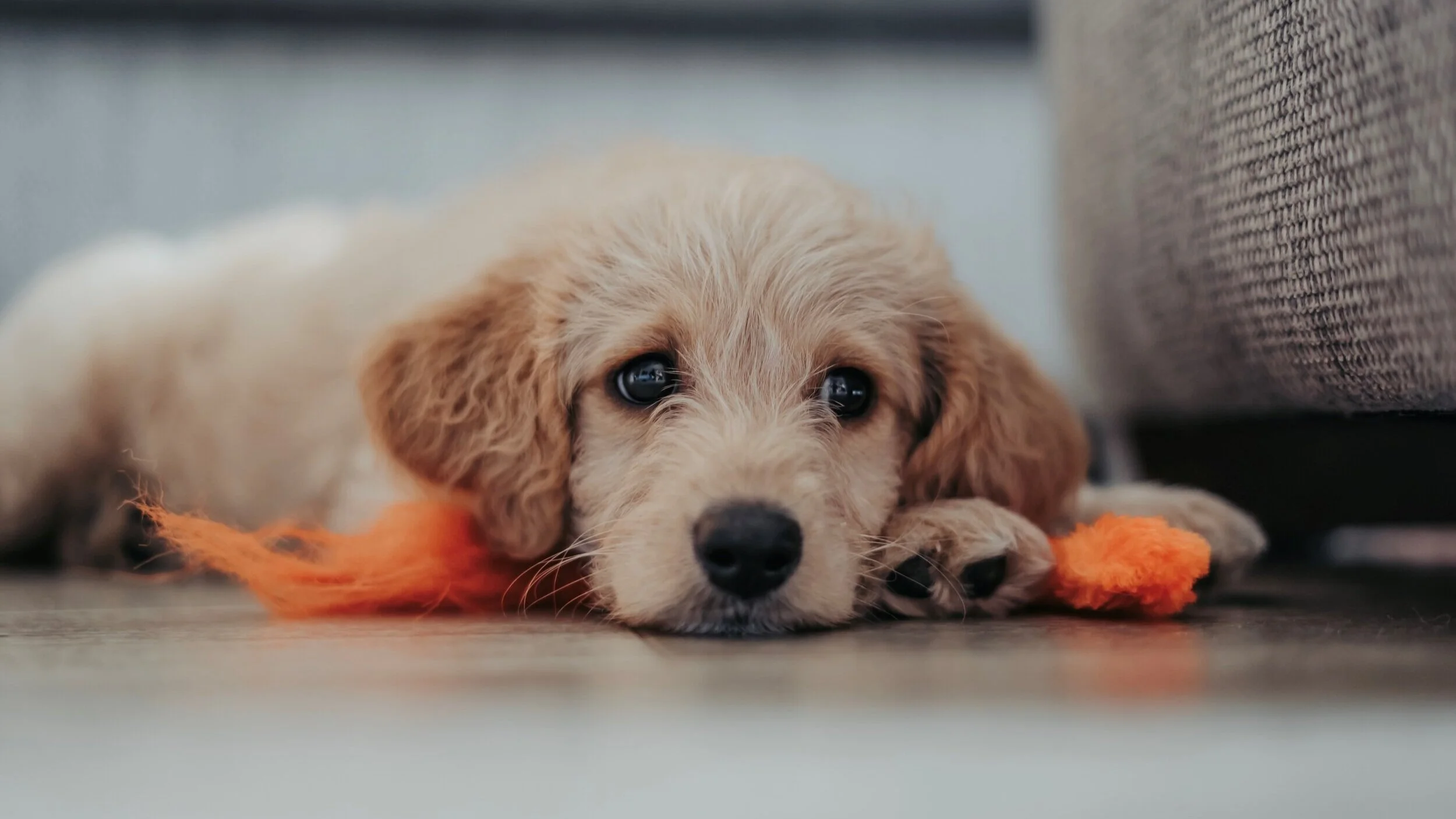How To Train Your Puppy Not To Bite You
When it comes to puppies, biting/mouthing/nipping is usually at the top of the list of the most common complaints I hear about from new paw-rents!
I can also personally relate after fostering quite a few puppies myself in the past who were determined to bite (in the cutest way) every inch of my skin! :)
Before we get into how to go about remedying this issue, let’s first look at WHY puppies bite, mouth and nip so much in the first place.
Why Puppies Bite
Puppies, much like human babies, begin their lives by EXPLORING their new world with their mouths, not only as a way to learn about different shapes, textures, and tastes, but also as a way to manipulate objects, as they prefer to use their mouths compared to their paws for this purpose.
Another reason why puppies bite so much is because they go through an uncomfortable TEETHING process at about 3-4 months of age, when their 30 baby teeth start falling out and is gradually replaced by about 40 adult teeth. As these sharp teeth grow out of your puppy’s gums, they cause discomfort which causes your puppy to seek out chewing outlets to help ease the pain. At this time, puppies will usually chew, gnaw and bite just about anything to soothe themselves during this painful period. Often times, teething pain may leave your puppy feeling agitated and in constant search for the next thing to bite (Namely: YOU)!
Yet another reason why puppies bite so much is because it’s a normal way that they instigate play with their siblings. It’s during this time that dogs establish a communication system between them that develops their BITE INHIBITION. Bite inhibition means that puppies learn to control the strength of their jaws. If one pup bites the other too hard, the hurt pup will usually yelp and take a pause from play. This, in return, will teach the offending pup not to bite so hard next time.
Alternatively, your puppy may be excessively biting and nipping because they have lots of ENERGY, or may be OVERTIRED. Puppies can often get overstimulated which causes them to get into a biting frenzy, or just like a toddler that throws a tantrum when it’s time for a nap, your puppy may be showing you that they need crate/playpen time to unwind and relax.
Puppies also may bite in order to get OUR ATTENTION! Imagine you are sitting on the couch watching TV. Your puppy may not be sharing your passion for the program, and instead, looking for some fun! He approaches you and nips at your foot - you react immediately by moving it away, looking at the puppy and telling him, “no!”. Despite your tone of voice, your puppy finds that entertaining — foot moving away = chase, nip = looking at + talking to him. He will likely try that strategy again to get your attention.
Lastly, puppies may bite out of FEAR, ANXIETY, or when FEELING CORNERED. This is a signal for you to become more observant of the situations/stimulus that trigger your puppy and the body language he uses to express discomfort — staring, ears pulled back, closed mouth, tension in the face and body, etc.
Now that we know a bit more about WHY they bite, nip and mouth, let’s now discuss HOW to save our limbs from becoming the victims of sharp puppy teeth!
Step 1: Uncovering The Underlying Reason Behind The Biting
Discovering the WHY behind the biting and nipping behaviors will help you address your pup’s needs and provide him with an alternative activity he can engage in instead.
For example, if you can tell that your puppy is experiencing discomfort due to teething, you can provide him with a frozen Kong stuffed with peanut butter or yogurt (always keep one ready to go in the freezer) that he can chew on. The cold will help soothe those achy gums. An ice cube or a chew may be a good option, as well.
Alternatively, if your puppy is biting because he has too much energy, engage him in a game of fetch or tug. These games are structured play activities that allow your pup to get rid of that energy and will come in handy for the rest of your pup’s life. You could also redirect your pup to a training session and engage him in a fun learning activity.
Learning can take a lot out of you!
Step 2: Puppy Biting Management
Managing the the puppy’s environment will prevent him from biting and mouthing you! Here are some ideas on how to achieve just that:
Using Playpens / Crates
Keep track of your puppy’s activity and biting patterns. Mornings and evenings seem to be generally when my clients struggle the most. Let’s say that around 8pm each evening your puppy goes into a biting frenzy. He may be over tired and be throwing a tantrum. This is a great time to place your puppy in his playpen or crate with a high value chew (braided bully stick or a stuffed KONG) and let them focus on that instead. The separation of the playpen/crate will help your puppy focus on chewing instead of following/biting you.
Using Tethers
Tethers provide the option for our puppy to remain in one area of the home, like right by his bed, instead of chasing after and biting you. Using a tether can also help with training your puppy not to bite your feet/pants as you move around your home. Ask your puppy to Sit or Lay Down and Stay, then walk by your puppy, mark with “yes” the moment you are closer to him and he is remaining in position instead of trying to bite at your feet. Gradually increase the difficulty and make your movements more and more exciting as you decrease the distance between you and your puppy. This will teach your puppy an alternative behavior instead of the unwanted biting.
That said, always carry a toy with you. Get in the habit of always having something handy - a squeaky toy or a rope toy so you can redirect your puppy to play with an appropriate toy instead of biting YOU! Check out our article “TOYS! TOYS! TOYS!” for a list of our favorite toys here.
Step 3: Training
The main goal of training when it comes to a biting puppy is to teach him an alternative behavior. Here are the main ones we use:
Sit Instead of Biting. Since most puppies learn to “Sit” relatively fast and it is a behavior we reward quite often, you can use it to redirect your pup into a “Sit” instead of biting. Observe your pup and when you see him coming towards you with “that look”, ask him to “Sit” before he even gets a chance to bite you. Reward him for it.
Find It. This is simple game but I have found so many applications for it. Let’s say you were able to prevent your puppy from biting you by asking him to “Sit”. Next, toss a treat away from you on the ground while saying, “Find it!” and let your pup run after it. Now, we’ve moved the action completely away from you. Your puppy is sniffing the ground which calms him down and he’s eating a treat that helps reduce the adrenalin in his system. He will most likely return and “Sit” right in front of you to restart the game! Voila! Your puppy now forgot all about biting you!
Sit/Stay or Down/Stay. This requires your pup to already have a good foundation of the “Stay” behavior. Teach your pup to “Stay” with Duration, Distance and Distractions separately. Next, start asking your pup for “Sit/Stays” or “Down/Stays” when he’s mildly excited and build your way up to being able to redirect a highly aroused and biting pup to those positions. It is an invaluable skill to have that will teach your pup to calm down fast and prevent a lot of frustration.
Drop It. For those pups who love to bite our pants and any other hanging thing attached to us! When you ask your pup to “Drop it”, you’re asking your pup to release the thing in his jaws. Practice “Drop it” separately with toys. The easiest way to teach this is to use a lure. Say, “Drop it” and place a piece of treat by your puppy’s nose, wait for him to release the item from his jaws, say, “Yes1” and let him eat the treat, then reengage him in play with the same toy and repeat the process. Soon, you will find that you won’t need to use the lure (treat) and just reward your pup for releasing the toy with another round of tug. When you know that your pup understands the meaning of your “Drop it” request, practice walking by him, wearing those pants he goes for. If he does end up with your pants in his teeth, say “Drop it”, lure if needed, mark with “Yes” and reward your pup for releasing.
Go to Bed + Down/Stay. Teaching your puppy to go to his bed and lay down instead of biting you as you walk by can be a great option too. Here is how you can teach him just that: get your puppy in a “Down/Stay” position on his bed and walk by him, mark with a “Yes” and toss a treat to your pup the moment you are closest to him and he is still in position instead of trying to chase after and bite at your feet, for example. Gradually increase the difficulty and make your movements more and more exciting (faster) as you decrease the distance between you and your puppy. Using a tether initially will help your puppy succeed.
Easy & Time-Out. These 2 cues will teach your pup that his behavior has consequences! Select a certain level of excitement or bite. As you observe your puppy escalate into higher levels of excitement, say “Easy” (he won’t respond to this initially) and if he doesn’t calm down, say “Time-out” and leave the room for 30 seconds to a minute or longer (keep track of the duration of the time-out that helps your pup calm down). Engage your pup in a short training session when you return (Sit, Down, Sit, Stay, etc) to refocus his energy and then redirect him to a more appropriate toy or chew. The goal here is to teach your puppy to respond to those cues by adjusting his levels of excitement and calming down when he hears your “Easy” cue without having to implement an actual Time-out.
Step 4: Enrichment
Enrichment means that we are allowing our pups to engage in their innate behaviors by providing outlets for chewing, sniffing, chasing, problem solving, playing and so on. I personally looooove this website: 100 Days of Enrichment! Please check it out for some amazing ideas on how you can keep your dog happy and occupied!
In Conclusion
Having a puppy is a rewarding, but at times — a truly challenging experience. PATIENCE is a virtue that I talk about all the time. The truth is, canine puppies have sharp little teeth and humans have sensitive skin. Most of the biting and nipping naturally disappears when your pup grows into his adult teeth at about 6 months of age.
Understanding why your puppy is doing what he is doing and how to best satisfy his needs, providing him with physical and mental stimulation and enrichment opportunities, managing him and his environment to the best of your ability, and setting him up for success through positive reinforcement training will all play a role in redirecting, reducing and eliminating your puppy’s unwanted biting and nipping. There are always things to be worked on, so we might as well do our best to enjoy and appreciate the journey itself!
Learn more in our new webinar:
“Training Your New Puppy”!
In it, you’ll find all the information that you need in order to get started on the right paw the journey of puppy parenthood!
